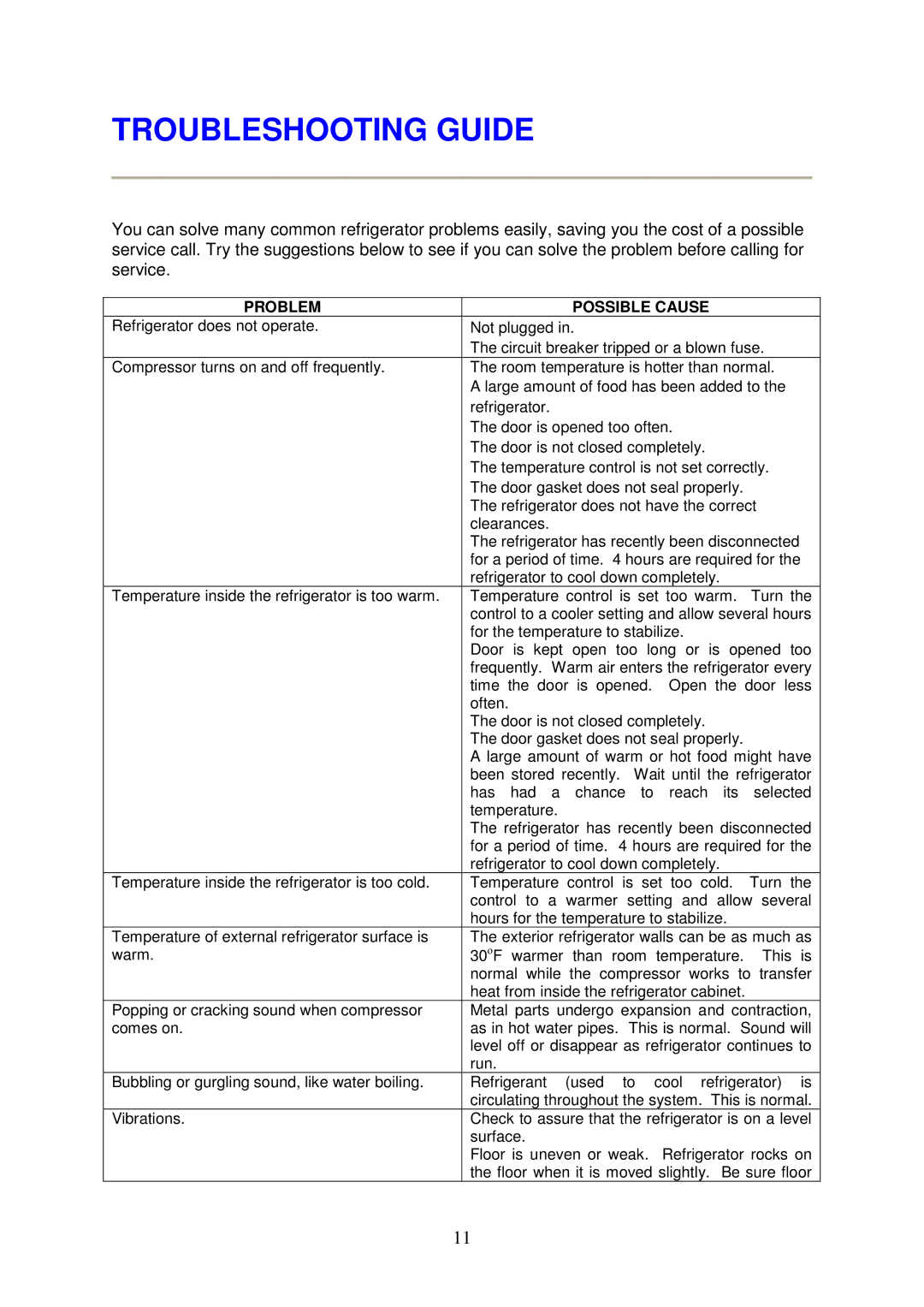
TROUBLESHOOTING GUIDE
You can solve many common refrigerator problems easily, saving you the cost of a possible service call. Try the suggestions below to see if you can solve the problem before calling for service.
PROBLEM | POSSIBLE CAUSE |
|
Refrigerator does not operate. | Not plugged in. |
|
| The circuit breaker tripped or a blown fuse. | |
Compressor turns on and off frequently. | The room temperature is hotter than normal. | |
| A large amount of food has been added to the | |
| refrigerator. |
|
| The door is opened too often. |
|
| The door is not closed completely. |
|
| The temperature control is not set correctly. | |
| The door gasket does not seal properly. |
|
| The refrigerator does not have the correct | |
| clearances. |
|
| The refrigerator has recently been disconnected | |
| for a period of time. 4 hours are required for the | |
| refrigerator to cool down completely. |
|
Temperature inside the refrigerator is too warm. | Temperature control is set too warm. | Turn the |
| control to a cooler setting and allow several hours | |
| for the temperature to stabilize. |
|
| Door is kept open too long or is opened too | |
| frequently. Warm air enters the refrigerator every | |
| time the door is opened. Open the door less | |
| often. |
|
| The door is not closed completely. |
|
| The door gasket does not seal properly. |
|
| A large amount of warm or hot food might have | |
| been stored recently. Wait until the refrigerator | |
| has had a chance to reach its selected | |
| temperature. |
|
| The refrigerator has recently been disconnected | |
| for a period of time. 4 hours are required for the | |
| refrigerator to cool down completely. |
|
Temperature inside the refrigerator is too cold. | Temperature control is set too cold. | Turn the |
| control to a warmer setting and allow several | |
| hours for the temperature to stabilize. |
|
Temperature of external refrigerator surface is | The exterior refrigerator walls can be as much as | |
warm. | 30οF warmer than room temperature. | This is |
| normal while the compressor works to transfer | |
| heat from inside the refrigerator cabinet. |
|
Popping or cracking sound when compressor | Metal parts undergo expansion and contraction, | |
comes on. | as in hot water pipes. This is normal. Sound will | |
| level off or disappear as refrigerator continues to | |
| run. |
|
Bubbling or gurgling sound, like water boiling. | Refrigerant (used to cool refrigerator) is | |
| circulating throughout the system. This is normal. | |
Vibrations. | Check to assure that the refrigerator is on a level | |
| surface. |
|
| Floor is uneven or weak. Refrigerator rocks on | |
| the floor when it is moved slightly. Be sure floor | |
11
